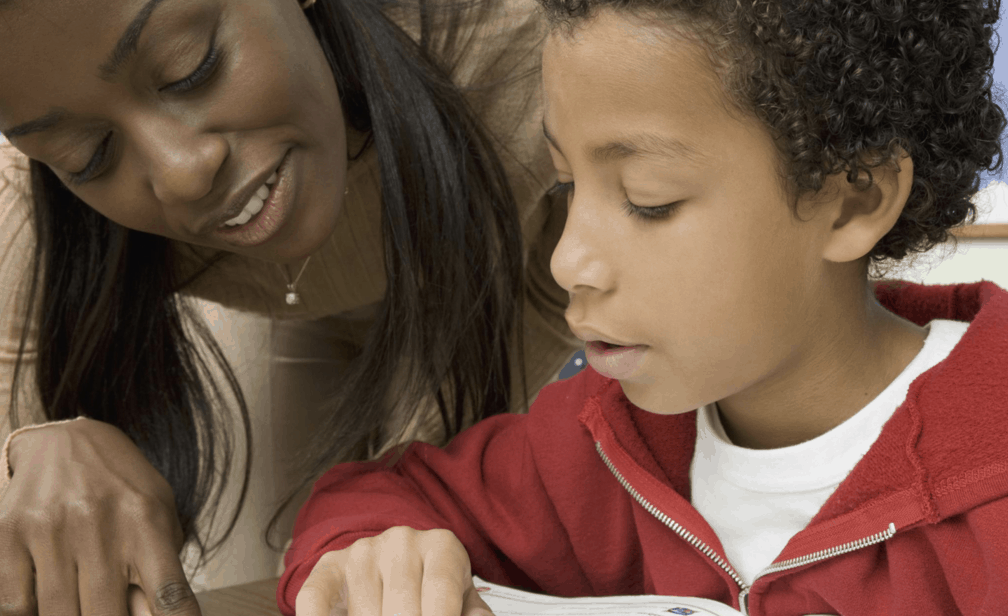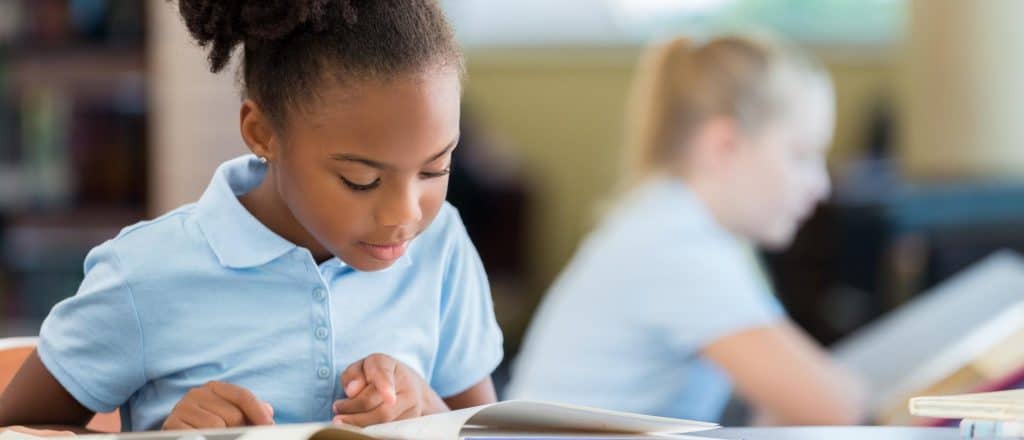It may seem like common sense that students perform better in class when they receive support that meets their needs. Research around differentiated instruction confirms this is true. If you can adapt your instruction to reflect your students’ needs and learning preferences, you can make class time more effective and help students become more engaged.
In this article, we’ll go over what differentiated instruction is and how using this learning strategy can provide your students with the resources they need to succeed. Then, we’ll provide a few ideas for differentiating your classroom instruction and show you how Waterford curriculum can help you provide personalized reading instruction.
What is Differentiated Instruction?
 Before we delve into the benefits of using differentiated instruction in class, let’s define what it is. Differentiated instruction is an educational strategy in which teachers adapt their instruction to meet the needs of their class. While the subject material itself remains consistent, the way you teach it to students may vary depending on their needs.[7]
Before we delve into the benefits of using differentiated instruction in class, let’s define what it is. Differentiated instruction is an educational strategy in which teachers adapt their instruction to meet the needs of their class. While the subject material itself remains consistent, the way you teach it to students may vary depending on their needs.[7]
The idea behind differentiated learning theory is to make sure your curriculum reflects the diverse needs of your students.[9] Each student enters the classroom with unique experiences, preferences, and conditions that affect how they learn. Differentiated instruction provides students with different resources or options for understanding and mastering a concept, depending on their unique needs.[4] This can help move your classroom from heterogenous instruction toward individualized learning. [4,6]
Differentiated instruction doesn’t necessarily involve giving every student separate assignments—though you may adapt or modify assignments as specific needs arise. It’s more about providing students, individually or in a group, with different learning options or providing accommodations to help them learn more effectively.[11]
Sounds familiar? Differentiated instruction is often compared to the learning styles theory, which posits that all students respond best to one of four learning methods. While research into learning styles is mixed, there are clear and measurable benefits to adapting your teaching methods to your students’ needs.
Benefits of Differentiated Learning for Students
In a survey from the International Journal of Education, 97% of teachers reported never or seldom using a flexible curriculum for their students.[2] So why should you consider bringing differentiated learning into your classroom? The research is clear: students, especially those with diverse learning needs, learn more effectively when teachers respond to their needs.
A study published by Procedia Social and Behavioral Sciences found that students’ learning outcomes significantly improve when teachers use differentiated content that responds to a student’s learning preferences.[5] Students are also more likely to focus and be engaged in the learning process when teachers differentiate their instructional strategies.[1,6] As you provide opportunities for students to explore content based on their strengths, they’re more likely to flourish in your class.
Differentiated instruction strategies are especially important for students with physical or learning disabilities.[4] These students often have strengths and weaknesses that are different from other students who don’t have the same disability. By differentiating your instruction, you can adapt lessons or assignments for these students to better accommodate their needs.[4]
How to Differentiate Instruction in Your Classroom
Now that we’ve gone over why differentiated learning matters in the classroom, let’s go over instructional strategies. Some teachers may feel discouraged because differentiated instruction can sound like an increased workload.[2] But differentiated instruction can make your teaching strategies more effective over time, which can help you make the most of both your students’ time and your own.
According to educational researcher and differentiated instruction expert Carol Ann Tomlinson, there are four key ways to differentiate classroom instruction:[8]
- Content: How the student will access the information
- Process: The method of the activities students use to understand the information
- Product: Projects or homework that ask the student to practice or apply the information
- Learning environment: The space where the student is learning the information
If a student might work more efficiently in a quieter learning environment, for example, you could allow them to complete a project in the school library. Or if you think a student would respond to a more visual approach with vocabulary words, you could adjust the content to include images with each word or adjust the product by assigning them to draw a picture that represents the words.
Additionally, don’t get overwhelmed by feeling that you have to make all of your assignments unique for each student. Some students may have specific needs that require you to adjust your assignments or teaching strategy. But in many cases, you can practice differentiated learning by either breaking students with similar needs into groups or offering all students several options for completing an assignment.[10]
Overall, the best way to practice differentiated instruction is by getting to know your students. As you work with them over the school year, you’ll be able to better understand their needs and what types of assignments they respond to.[9] And just as important, you’ll be able to help them recognize their own strengths and learning preferences—which can help them seek out the right learning strategies through their academic career.
Waterford’s Adaptive Curriculum Offers Differentiated Instruction
 One of the most efficient ways to differentiate instruction is through educational technology that adapts to students’ needs.[3] Waterford curriculum is designed to meet students where they are and provide the individualized support they need to master the foundations of literacy and move to independent reading. Additionally, our curriculum has been proven effective for students who may need extra support, including low-performing students and dual-language learners.
One of the most efficient ways to differentiate instruction is through educational technology that adapts to students’ needs.[3] Waterford curriculum is designed to meet students where they are and provide the individualized support they need to master the foundations of literacy and move to independent reading. Additionally, our curriculum has been proven effective for students who may need extra support, including low-performing students and dual-language learners.
Waterford ensures that students learn to read through thousands of games, songs, and activities. Our programs assign these lessons based on a student’s placement assessment and their demonstrated mastery. That way, the focus is always on the skills where they need the most practice.
And for older students, you can adjust our book-based study guides to offer personalized lessons on books you’re reading as a class. Students can also select independent reading books from our online library. When students choose what to read based on their personal interests, it encourages focus and engagement.
To learn more, get in touch! We’d love to discuss how our PreK–6 reading programs can revolutionize the way you support your students as they move from “learning to read” to “reading to learn.”
Sources:
- Morgan, H. Maximizing Student Success with Differentiated Learning. The Clearing House: A Journal of Educational Strategies, Issues, and Ideas, 2014, 87(1), pp. 34-38.
- Jager, T. Guidelines to assist the implementation of differentiated learning activities in South African secondary schools. International Journal of Inclusive Education, 2013, 17(1), pp. 80-94.
- Mentis, M. Different Technologies for Differentiated Education: Social Networks, Identity and Diversity in e-Learning. International Journal of Diversity in Organizations: Annual Review, November 2007, 7(3), pp. 85-93.
- Landrum, T.J., and McDuffie, K.A. Learning Styles in the Age of Differentiated Instruction. Exceptionality: A Special Education Journal, 2010, 18(1), pp. 6-17.
- Tulbure, C. Do different learning styles require differentiated teaching strategies? Retrieved from sciencedirect.com: https://www.sciencedirect.com/science/article/pii/S1877042811000541
- Subban, P. Differentiated Instruction: A Research Basis. International Education Journal, 2006, 7(7), pp. 935-947.
- Tomlinson, C.A. Mapping a Route Toward Differentiated Instruction. Educational Leadership, September 1999, 57(1), pp. 12-16.
- Weselby, C. What is Differentiated Instruction? Examples of How to Differentiate Instruction in the Classroom. Retrieved from resilienteducator.com: https://resilienteducator.com/classroom-resources/examples-of-differentiated-instruction/.
- NYUSteinhardt Staff. Culturally Responsive Differentiated Instructional Strategies. Retrieved from nyu.edu: https://research.steinhardt.nyu.edu/scmsAdmin/uploads/005/120/Culturally%20Responsive%20Differientiated%20Instruction.pdf.
- Tomlinson, C.A. Differentiation of Instruction in the Elementary Grades. Retrieved from ericdigests.org: https://www.ericdigests.org/2001-2/elementary.html.
- Tucker, G.C. Differentiated Instruction: What You Need to Know. Retrieved from understood.org: https://www.understood.org/en/learning-thinking-differences/treatments-approaches/educational-strategies/differentiated-instruction-what-you-need-to-know.

